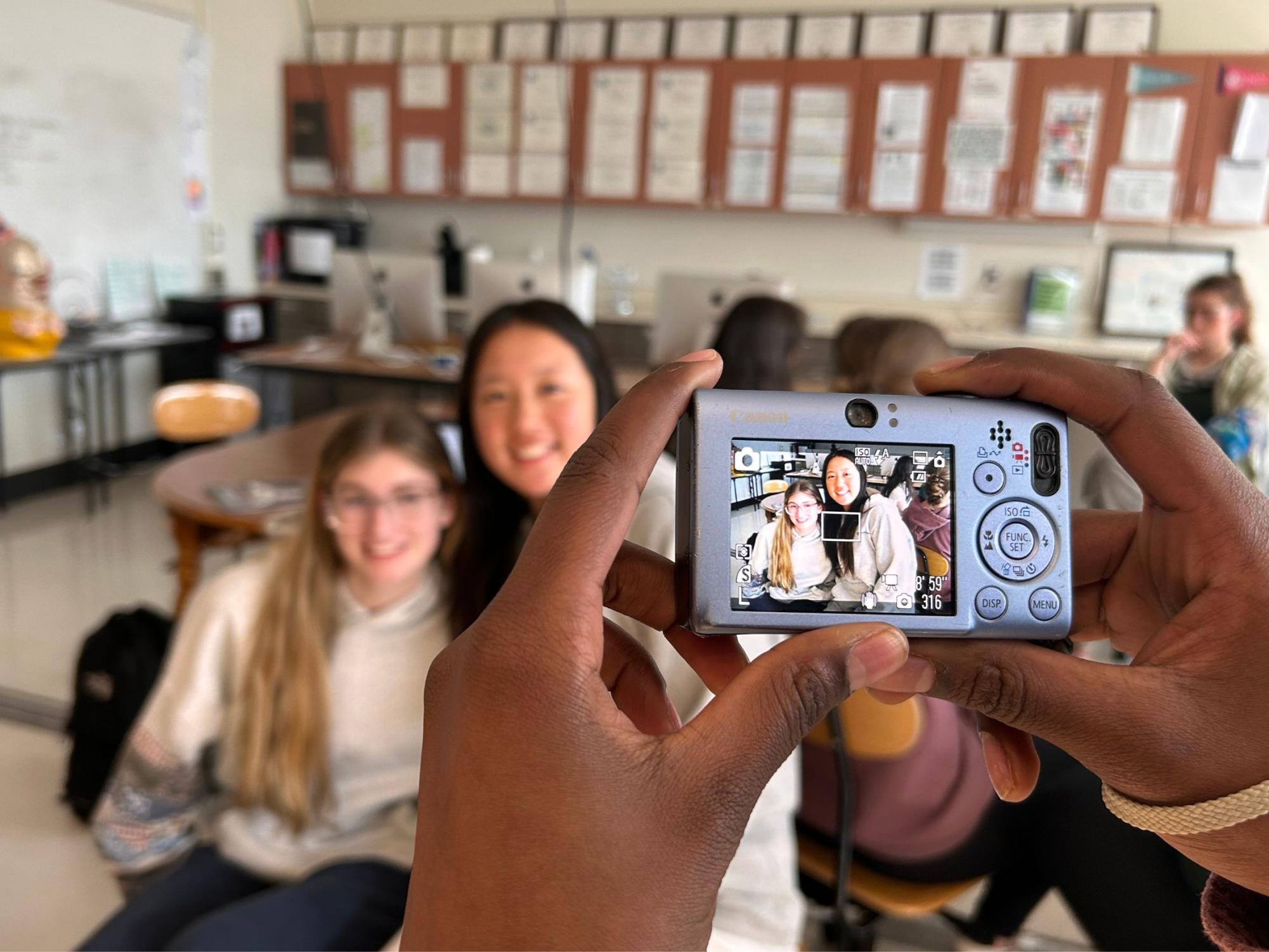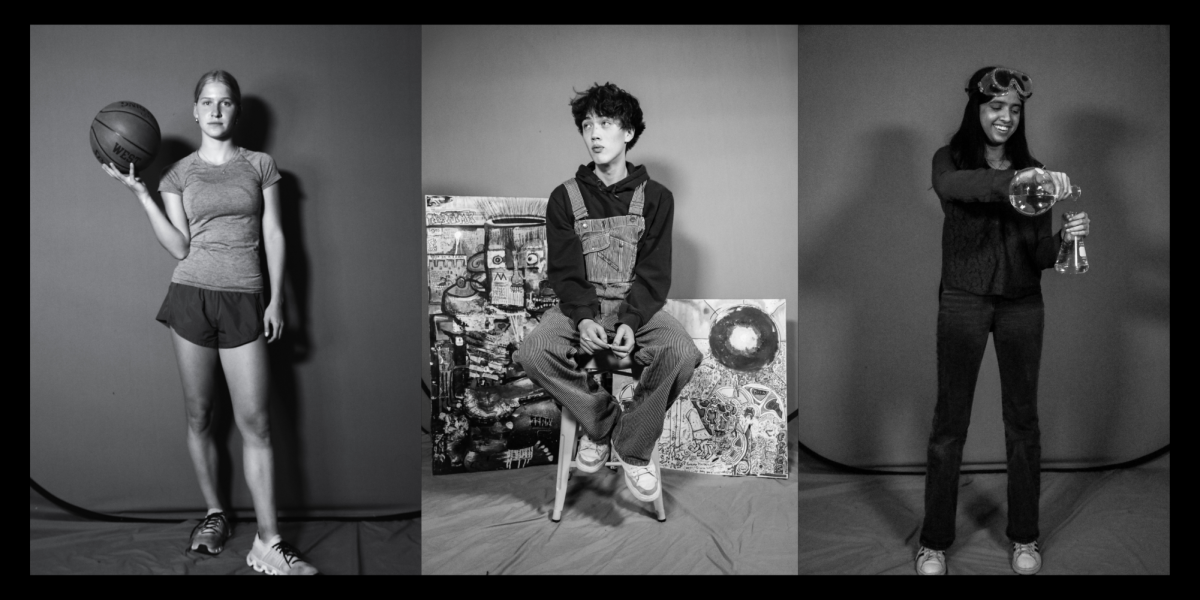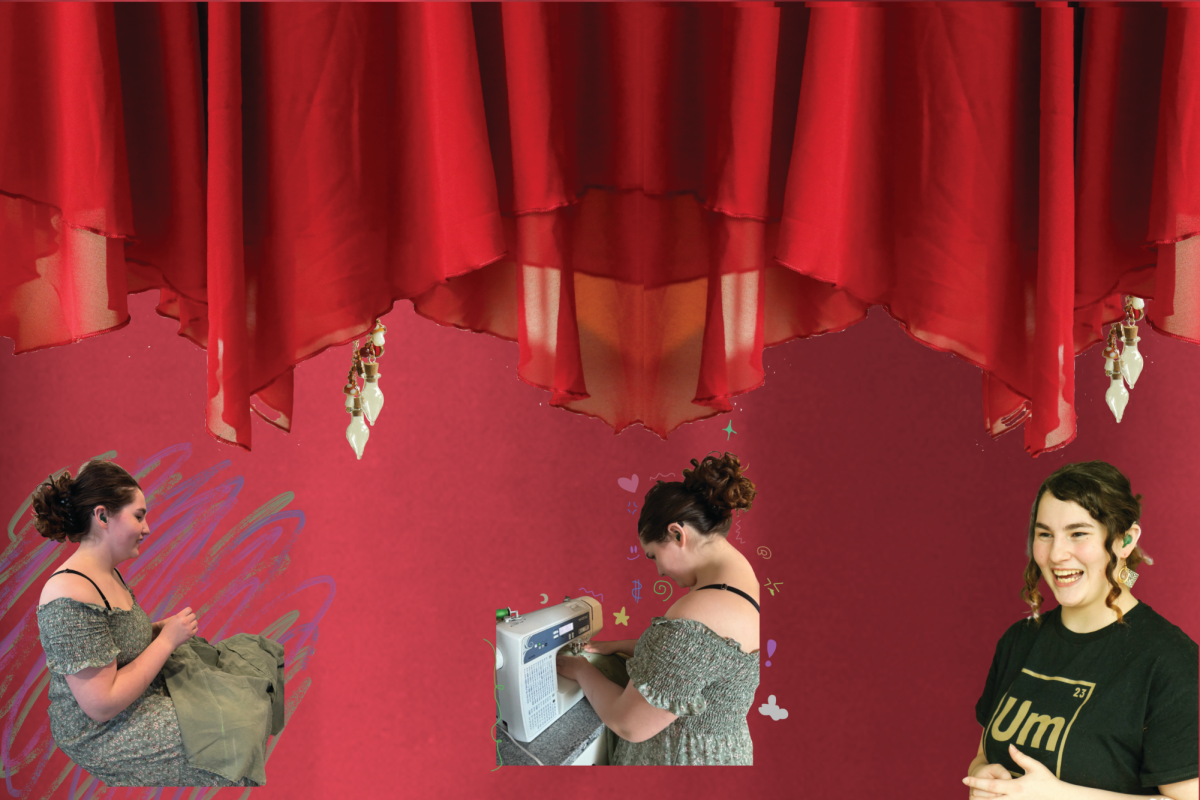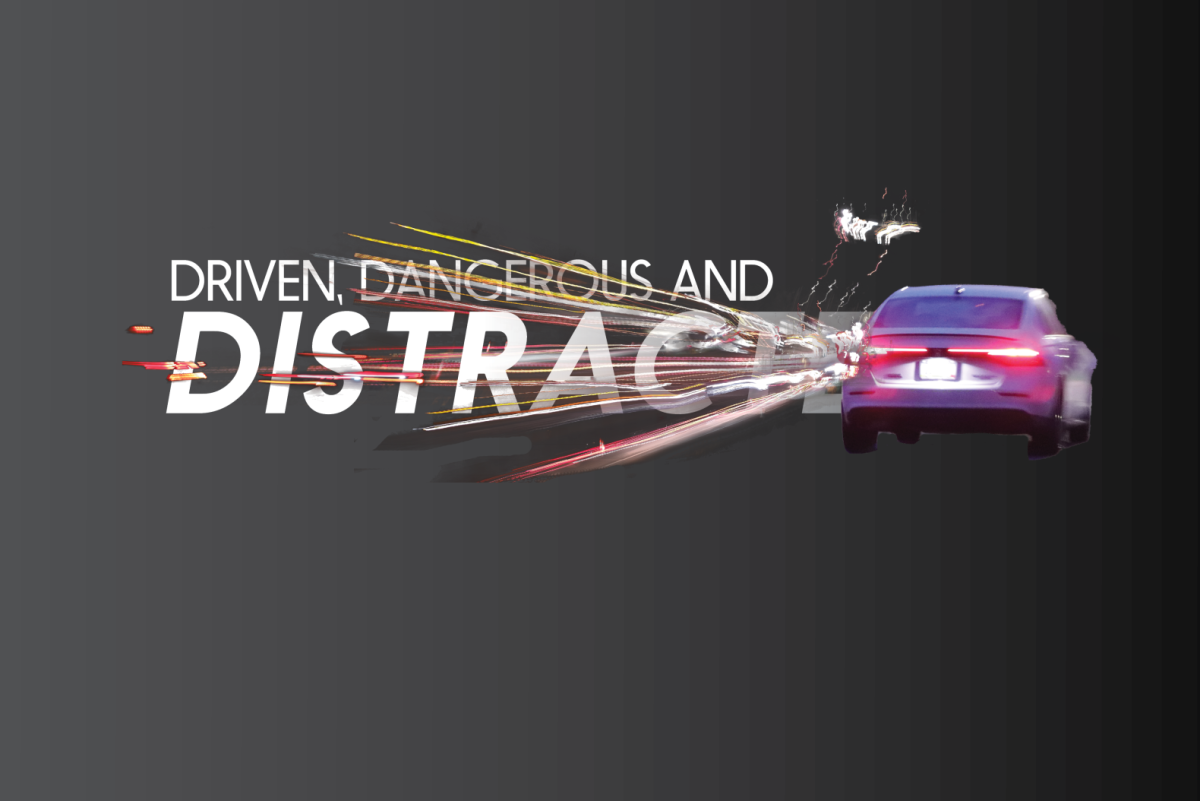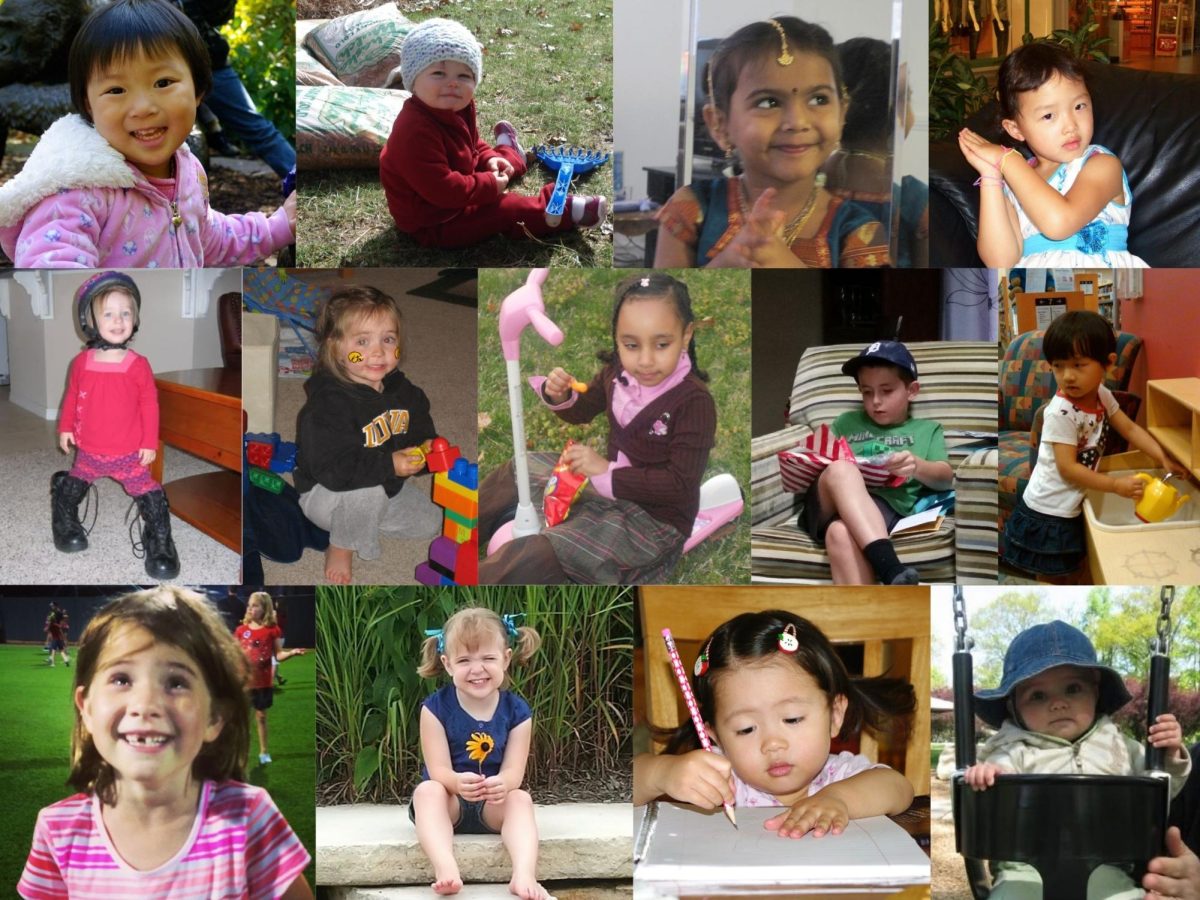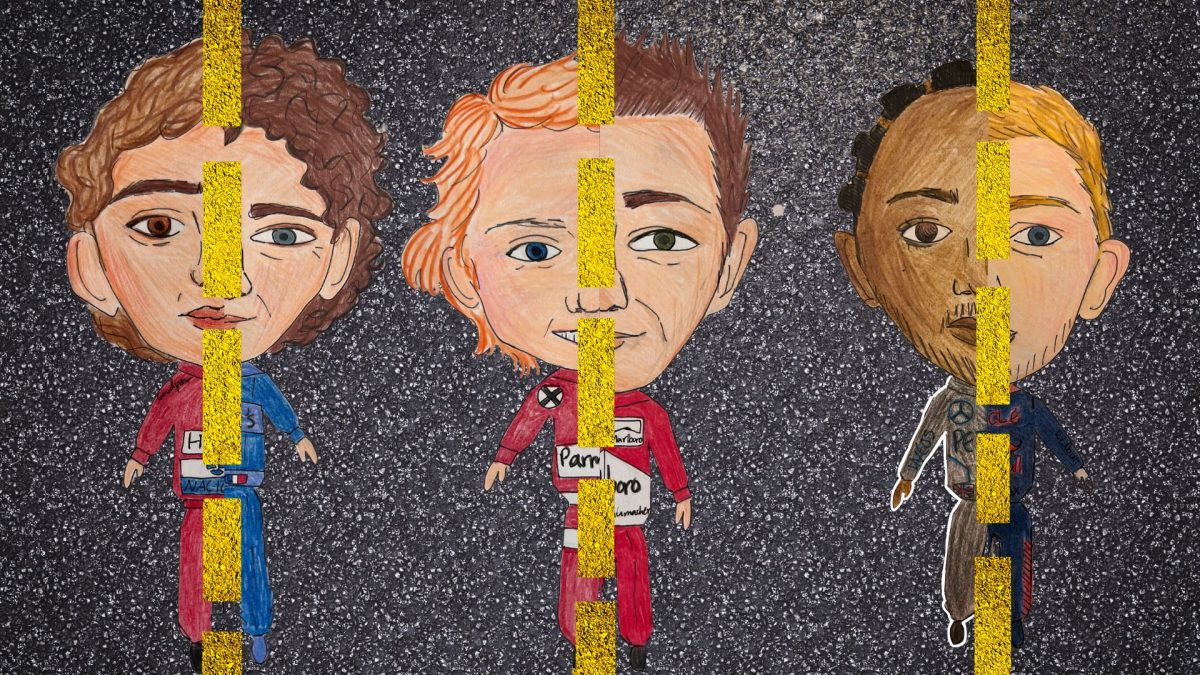Point. Pose. Focus. Flash. With the help of a 20-year-old compact digital camera, the perfect Instagram photo dump is crafted. Although cell phones fitted with advanced cameras frequent the pockets of most teens, Generation Z is bringing back 2000s digital cameras.
Digital cameras haven’t gone away completely, as photographers of all levels have continued to use the advancing technology. However, some of the advancements come as a surprise. Due to the increasing popularity of older models of digital cameras, camera companies like Canon and Nikon are releasing newer models of cameras, thought to be left in the past.
While certainly amplified by social media platforms and influencers, there seem to be other reasons why the trend is back. A vintage experience and look put novelty back into the mundane experience of taking photos on smartphones. Or perhaps a lower screen time and a sense of candidness make digital cameras appealing.
Kailey Mgridichian, who used digital cameras as a child, agrees that the photos taken with them hold a different kind of charm.
“Digital photos feel more real. They look like the memory of the moment, rather than an exact copy of the scene. Phone photos are fine, but they don’t have that same physicality,” she said.
She also noted that part of what made digital cameras special, growing up, was the process that came with developing them.
“Some of them stayed digital. We would get the ones from vacations or big events developed. It was a much longer process than it is now, and you had to actually talk to someone rather than use a kiosk,” she said.
For Adriana Vargas ’26, a combination of the trend and personal interest persuaded her to seek out her mother’s digital camera after previously owning her grandmother’s.
“I stole [my digital camera] from my mother, and I got it because I had recently been seeing people starting to use digital cameras again,” Vargas said. “But also it was my own interest, because I’ve been wanting one for a really long time, and I had an old one from my grandma, but it doesn’t work anymore.”
Although Vargas’s current camera is a newer Canon camera than her first digital camera, she explains that photos taken on her camera are of a lower quality than those taken on her phone. Vargas sees this lower quality as candidness and opts to stay away from edited phone photos.
“The photos from a digital camera feel more candid and raw, and sometimes, it’s not completely [focused on] every single little detail,” Vargas said. “That’s what makes [the digital camera photos] better, because iPhone cameras point out like every single little thing, and on digital cameras, it kind of smooths it out a little bit.”
Mgridichian adds that early digital cameras often gave users a sense of freedom and creativity.
“I was really into bugs and nature. Anything but spiders,” Mgridichian said. “I would also take pictures of sunsets. I’m sure there were also lots of blurry ‘selfies’ taken the old-fashioned way, where you turned the camera around and hoped you were in the frame.”
For her, the appeal of the digital camera today isn’t just aesthetic, but also emotional.
“I remember going through boxes of family photos when my grandfather died. Each photo felt so precious. So many of them were decades old, and it’s a wonder they survived that long in a shoebox,” Mgridichian said.
Although she no longer uses a digital camera, she understands why the trend resonates.
“The photos feel more real and intentional. There’s no filters or instant uploads to social media,” Mgridichian said. “If a student wants a digital camera, maybe start out with the Kodak disposables. Then if they’re really interested, they could buy a real one.”
Even the brands themselves hold a kind of nostalgia.
“Kodaks were the coolest at the time, because they were able to make something that’s usually expensive into a cheap alternative,” McGridichian said.
Whether it’s for the nostalgic feel, the unique photo quality, or simply to stand out from the constant stream of phone pictures, digital cameras are finding their way back into backpacks and photo dumps. With newer models being released and older ones resurfacing from drawers and closets, it seems digital cameras won’t be fading out anytime soon.


